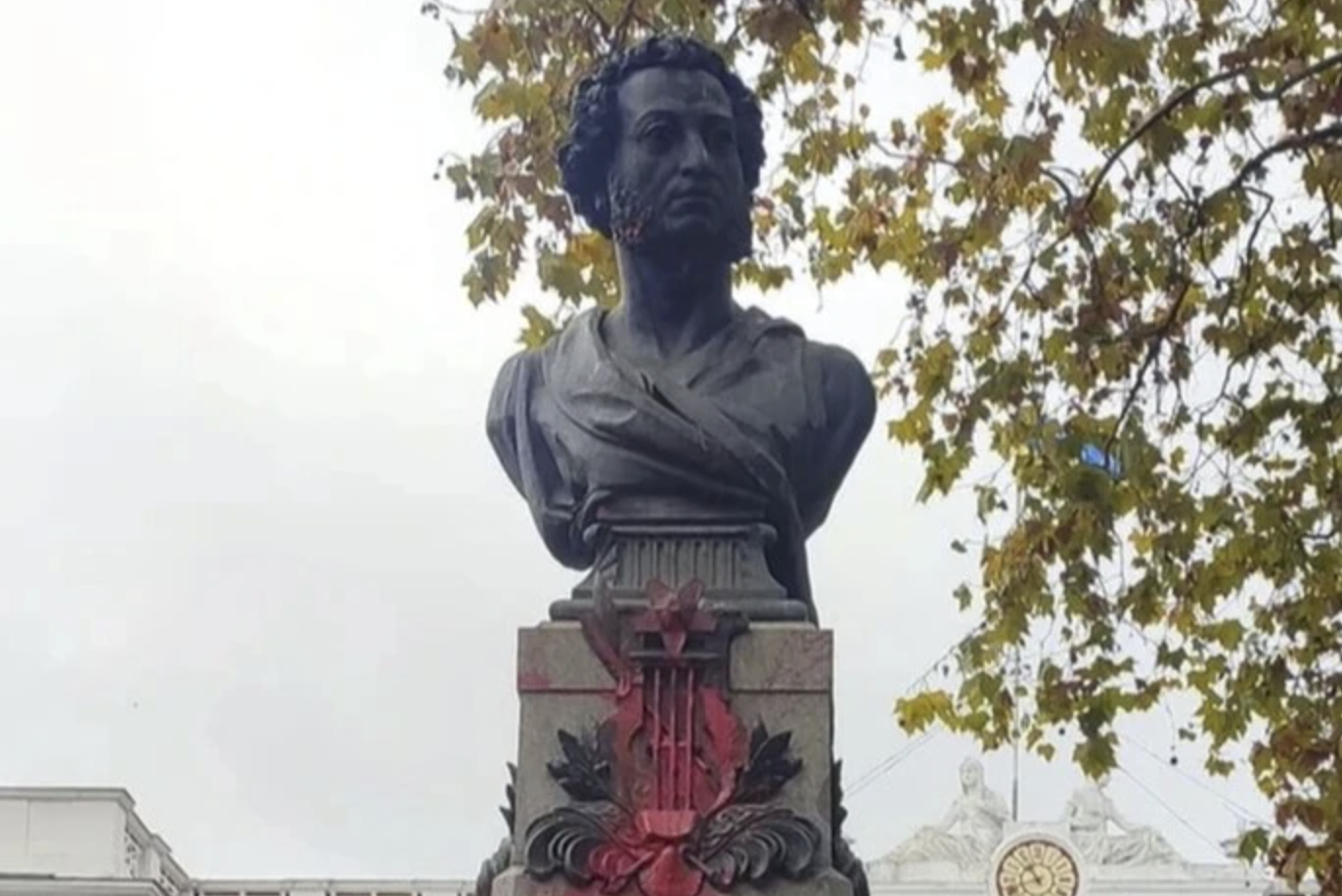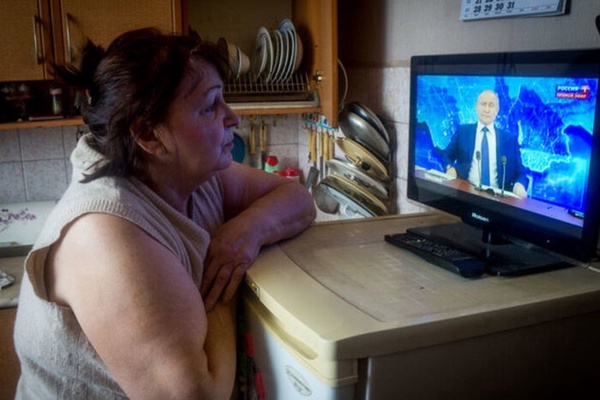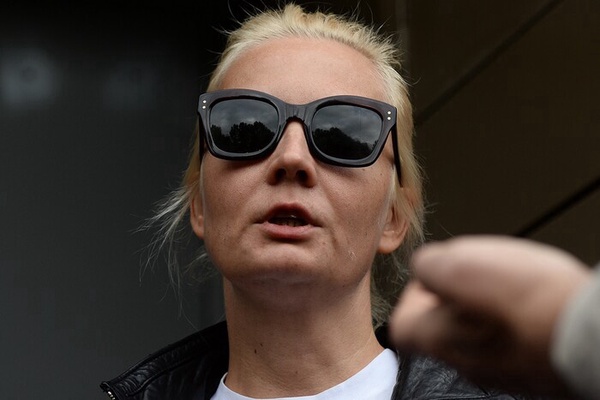Manipulation of Ukraine in Western media: how The Economist covers the decolonisation of Odesa

The Christmas edition of The Economist featured an article titled “Ukraine’s Cancel Culture. What happens in Odesa will determine what kind of country Ukraine becomes”.
The piece focused on the ongoing decolonization efforts in Odesa, specifically addressing the removal of a monument to russian poet Alexander Pushkin. The article argued that the attempts of the Ukrainian government to reevaluate its historical heritage have sparked some conflicts.
“Today, when the city is regularly targeted by russian drones and missiles, Odesa’s identity, polyphony, and freedom are under greater threat. This threat comes from Ukraine’s own officials and from a small but aggressive and noisy group of activists who have seized on the decolonization law,” the authors wrote.
The publication has triggered significant backlash in Ukrainian society. Critics argue that the author of the article overlooks the broader context of russia’s invasion and the importance of decolonization within Ukraine’s struggle for national identity. Many contend that the article presents a narrow and manipulative narrative that distorts the complexities of the real situation.

The author is of russian origin
Although The Economist adheres to a policy of anonymous authorship, it was not difficult to identify the writer of the article, as individuals with whom he communicated during the preparation of the material publicly mentioned this fact in their posts. For example, Zoya Kazanzhy, a journalist, media trainer and public figure from Odesa, wrote that the author of the article was Arkady Ostrovsky.
She explained that she was able to meet with Ostrovsky and answer his questions. According to Kazanzhy, their hour-long conversation, during which she shared her perspectives and arguments, was omitted from the final text, as was her name. Additionally, she noted the absence of other viewpoints critical of the article’s statements, despite Ostrovsky reportedly interviewing multiple individuals who held differing opinions.
Oksana Romaniuk, director of the Institute of Mass Information, and Oleksiy Panich, a philosopher, translator, and public activist, have also pointed to Ostrovsky as the article’s likely author.
But who is Arkady Ostrovsky? A British journalist of russian descent (Oh yes! Isn’t that a surprise?), he is also an editor at The Economist overseeing coverage of russia and Eastern Europe. He previously led the publication’s Moscow bureau. The Economist often assigns him to comment on events in Ukraine. However, this policy, which is largely followed by foreign media, reflects a double standard: while they often ignore the opinions of Ukrainians, citing our bias due to the war, they often allow russian voices to serve the interests of propaganda and their stance is no less imperialistic than that of Putin’s supporters.
Cancel Culture
Arkady Ostrovsky repeatedly employs the term “Cancel Culture” in his article, including in the title, to describe what he perceives as a modern form of boycott. This term typically refers to the exclusion of individuals from social or professional circles due to socially unacceptable behaviour under public pressure. However, applying this concept to Ukraine’s decolonization efforts appears superficial, failing to acknowledge the profound societal changes underway in our country.
Ostrovsky highlights the distinct nature of the decolonization process in Odesa compared to other Ukrainian cities. While it is true that Odesa’s experience is unique, the difference largely stems from significant local resistance to decolonization initiatives. For example, Odesa Mayor Hennadiy Trukhanov has openly opposed the removal of the Pushkin monument and defended the retention of street names linked to russian cultural figures. Trukhanov has repeatedly argued that Pushkin “has nothing to do with the war” and has claimed that dismantling the monument would amount to “a blow to the history of Odesa”.
Such arguments, however, disregard deeper aspects. Symbols of empire, including monuments, function as integral components of an aggressor’s propaganda apparatus. russian cultural figures like Pushkin have been instrumental in Soviet and russian ideologies, which sought to assert the “unity” of other cultures with russia and deny the independent existence of Ukrainian culture. Retaining these monuments and names in public spaces perpetuates the imperial narrative. For instance, during the russian occupation of Kherson, propaganda banners prominently featured Pushkin’s description of Kherson as “the southernmost land of russia”.
Ostrovsky’s article omits these contexts and instead frames the issue around alleged infringements on freedom of speech. This perspective exemplifies what critics describe as “imperial deafness,” a trait pervasive in russian society regardless of where its members reside.
Notably, The Economist addressed a related issue in 2020, when it published an article about the toppling of a statue of Edward Colston in the United Kingdom. The statue, which glorified a prominent slave trader, was removed during the Black Lives Matter protests. At the time, the publication argued that such actions contribute to “restoring Britain’s selective historical memory.” This raises questions about double standards: while the reassessment of imperial symbols in the UK is recognized as necessary and justified, similar efforts in Ukraine are dismissed under the reductive label of a “Cancel Culture”.
Are those advocating for the removal of monuments radicals or anti-Semites?
While the author does not explicitly make this claim, the narrative in the article leaves such implications open to interpretation.
The central figure in the piece is Nika Viknianskyi, a businessman and humanitarian adviser to Odesa Mayor Hennadiy Trukhanov. His story is framed through the lens of his personal experiences with anti-Semitism, which provides an emotionally charged backdrop. The article suggests that Viknianskyi continues to face harassment tied to the dismantling of monuments to russian poet Alexander Pushkin and Jewish writer Isaac Babel. The writer also highlights Babel’s Jewish heritage, framing the activists’ actions as an assault on Odesa's multicultural legacy.
Statements like “This [the inclusion of Odesa’s historic center in UNESCO’s list] was supposed to protect Odesa from russian missiles. I never thought that I would have to defend it from our own vandals” create a stark contrast. They present supporters of monument preservation as “civilized” defenders of heritage, juxtaposed against “radical” proponents of decolonization.
The article portrays the advocates for monument removal as extreme and uncompromising. Oleksandr Muzychko and Kateryna Musiienko are the only representatives of this “other side” given voice in the text. However, these activists are depicted as aggressors “imposing” their ideas on others. For instance, Musiienko is described as leading a group of “language defenders” who confront shop assistants and waitstaff using russian, allegedly “asking them to correct themselves” and even involving law enforcement if they refuse. The article claims that “sometimes bandits show up,” probably in response to the activists’ actions.
The quotes selected for the piece emphasize the most radical statements. For example, Muzychko is quoted saying, “Those people who stick to the russian language… help keep russian claws in the Ukrainian body.” The author draws a parallel between this metaphor and “an echo of Mr. Putin’s worst propaganda,” implicitly likening the actions of Ukrainian activists to russian aggression.
The campaign against the use of the russian language in public spaces is presented as “oppression of russian speakers.” Musiienko’s uncompromising stance— “Everything related to russia must be leveled”—is contrasted with the perspective of Odesa writer Maya Dimerli, who offers a more nuanced view: “russian is not only the language of the aggressor; it is also the language of the victim. And the victim is now being shamed for the aggressor’s actions.”
The article also employs emotionally charged statements, such as “The fear of speaking is replaced by the fear of thinking” and “As a result, what used to be marginal is becoming mainstream. People avoid discussions even about cultural symbols, which further divides society.”
The effect of this framing is to present de-russification as a radical, fringe, and morally questionable movement that allegedly fosters fear and societal division. The article, however, avoids addressing the broader context, including the war, the impact of russian propaganda, and the necessity of removing symbols of colonialism in society.
“The Odesa myth”
In his article, the author devotes significant attention to the so-called “Odesa myth,” consistently spelling the city’s name with two “s”-s, in line with russian transliteration. He describes the myth as rooted in “the joyful idea of freedom and beauty, entrepreneurship and opportunity—a city built on ‘sun-drenched steppes washed by the sea,’ as Babel put it.” Yet, the article fails to acknowledge that the “Odesa myth” originated within the framework of russian imperial policy.
At the turn of the nineteenth century, discussions of Odesa’s unique character emerged due to its prominence as a commercial and cultural hub. Recognizing the city’s strategic significance-its “otherness”, the imperial authorities implemented an active russification campaign. This effort included erecting monuments to figures such as Catherine II and Alexander II and crafting narratives that glorified russia’s role in the city’s development. These initiatives aimed not only to reinforce russian influence but also to erode Odesa’s multicultural identity.
By the late nineteenth and early twentieth centuries, Odesa had become a truly distinctive city. However, its so-called “golden age” entered popular culture largely through a russian and Soviet lens. This perspective was cemented by the works of Isaac Babel, the songs of Leonid Utesov, and Soviet-era films.
Following Ukraine’s independence, the “Odesa myth” was revived as a vehicle for perpetuating imperial narratives. The restoration of imperial monuments, such as the Alexander Column in 2012, and the creation of russian television series and books, including Liquidation and Sonia the Golden Pen, further advanced this agenda. These cultural products were disseminated widely in russia, promoting the notion of Odesa as a “russian city.” However, this image exists solely within the russian cultural paradigm.
Arkady Ostrovsky’s article does not address these contexts. Instead, his portrayal of Odesa seems influenced by his russian origins and cultural background, shaping his interpretation of the city’s history. This omission fails to offer a complete perspective of the city’s history.
Is this an information campaign?
The article appears to be part of a coordinated information campaign aimed at maintaining Odesa within the sphere of russian cultural influence. In fact, in late October, a group of cultural figures—most of whom do not reside in Odesa—submitted an appeal to UNESCO Director-General Audrey Azoulay, urging intervention in decisions to decolonize place names and dismantle imperial monuments in the city.
The letter characterizes the removal of monuments to Catherine II and other imperial symbols as a “hasty application of the law,” claiming it endangered “a significant part of Odesa’s World Heritage.” Additionally, the signatories opposed renaming streets honoring russian writers such as Ivan Bunin, Alexander Pushkin, Isaac Babel, Eduard Bagritsky, and Ilya Ilf, describing them as “prominent Jewish writers.”
This stance received notable coverage in foreign media. The Italian newspaper Il Foglio published the full text of the appeal, while Germany’s Frankfurter Allgemeine Zeitung ran a piece titled “This is how Ukraine harms itself.”
Odesa Mayor Hennadiy Trukhanov echoed this narrative during a visit to Germany in November, where he publicly quoted Pushkin and criticized Ukraine’s decommunization laws.
The article in The Economist aligns with this campaign, appearing as an attempt to defend russian imperial symbols under the guise of preserving cultural identity. The issue was further intensified by its inclusion in the magazine’s Christmas edition, with the cover featuring a bust of Pushkin displayed in an aquarium alongside other symbolic imagery. The topic of “Ukraine’s Cancel Culture” is also addressed in the editorial.
This situation underscores a broader issue: Ukraine’s story is once again being told to the world not through its own voice but through the lens of russian narratives ![]()
Prepared by Aliona Malichenko.






